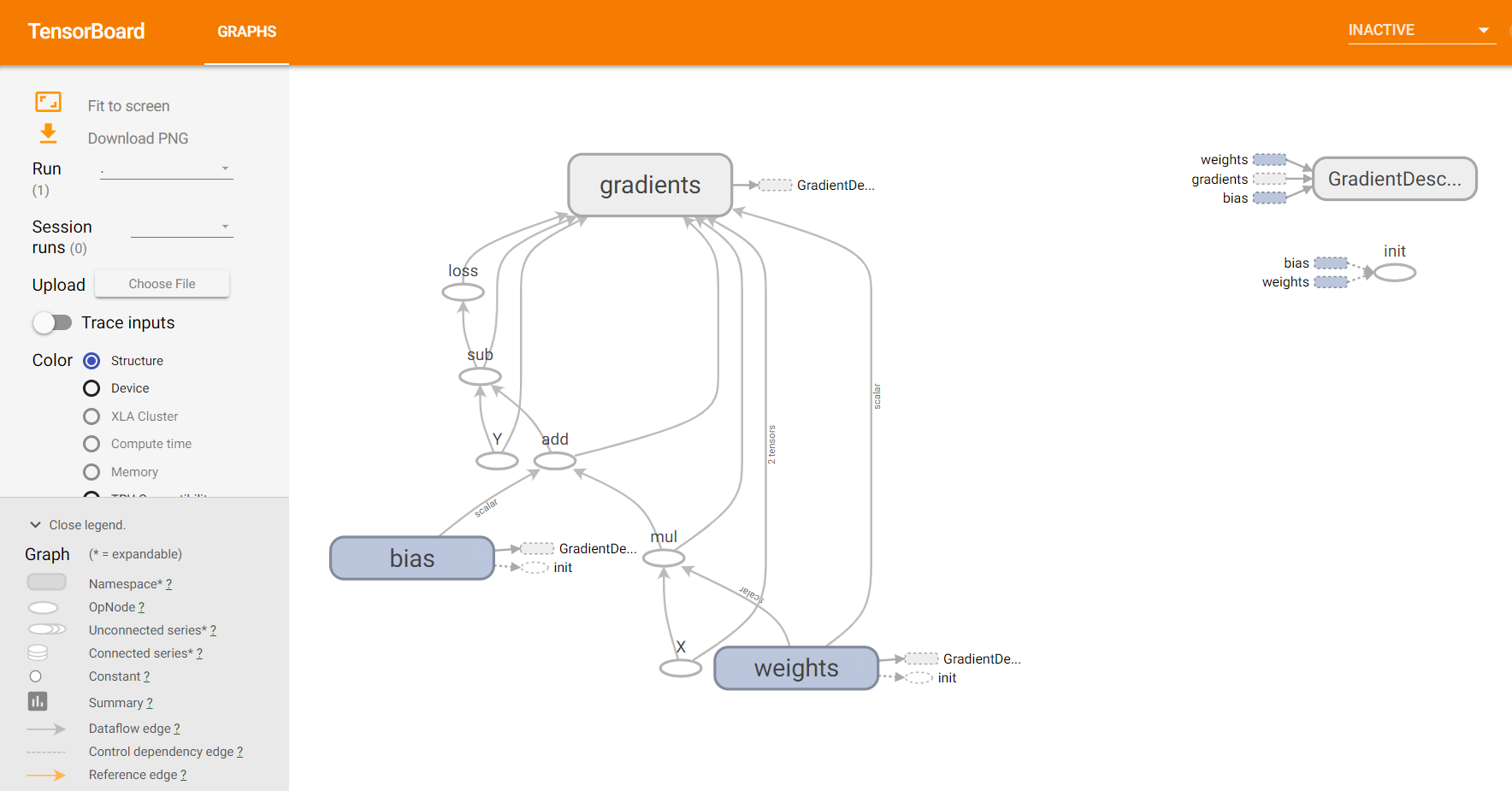TensorFlow笔记二:线性回归预测(Linear Regression)
代码:
import tensorflow as tf import numpy as np import xlrd import matplotlib.pyplot as plt DATA_FILE = 'fire_theft.xls' # 1.read from data file book=xlrd.open_workbook(DATA_FILE,encoding_override="utf-8") sheet=book.sheet_by_index(0) data=np.asarray([sheet.row_values(i) for i in range(1,sheet.nrows)]) n_samples=sheet.nrows-1 # 2.creat placeholders for input x(number of file) and label Y(number of theft) X=tf.placeholder(tf.float32,name='X') Y=tf.placeholder(tf.float32,name='Y') # 3.creat weight and bias ,init to 0 w=tf.Variable(0.0,name='weights') b=tf.Variable(0.0,name='bias') # 4.build model to predict Y Y_predicted = X* w +b # 5.use square error as the lose function loss=tf.square(Y-Y_predicted,name='loss') # 6.using gradient descent with learning rate 0.01 to minimize loss optimizer=tf.train.GradientDescentOptimizer(learning_rate=0.001).minimize(loss) with tf.Session() as sess: # 7.init necessary variables (w and b) sess.run(tf.global_variables_initializer()) writer=tf.summary.FileWriter('./my_graph/linear_reg',sess.graph) # 8.train the model 100 times for i in range(100): total_loss =0 for x,y in data: #session runs train_op and fetch values of loss _,l=sess.run([optimizer,loss],feed_dict={X:x,Y:y}) total_loss +=l print('Epoch {0}:{1}'.format(i,total_loss/n_samples)) # close the writer writer.close() # 9.output the value of w and b w_value,b_value=sess.run([w,b]) # plot the result X,Y=data.T[0],data.T[1] plt.plot(X,Y,'bo',label='Real data') plt.plot(X,X*w_value+b_value,'r',label='Predected data') plt.legend() plt.show()
fire_theft.xls


图例:

TFboard: tensorboard --logdir="./my_graph/linear_reg" --port 6006


